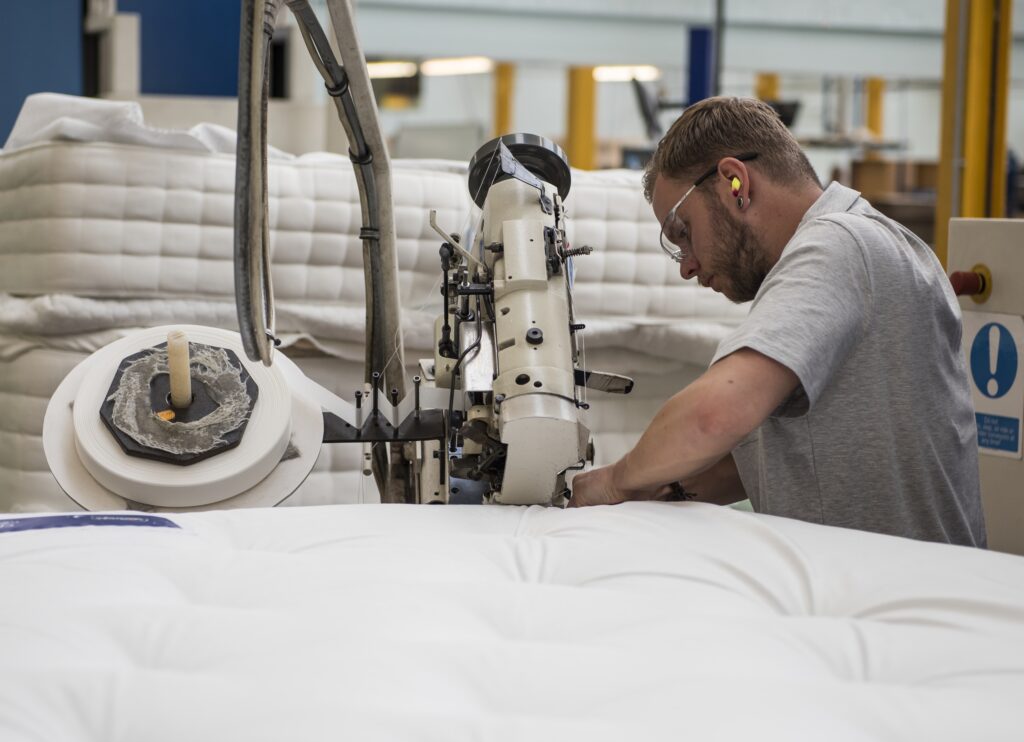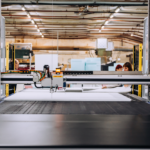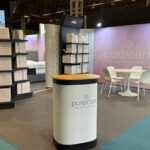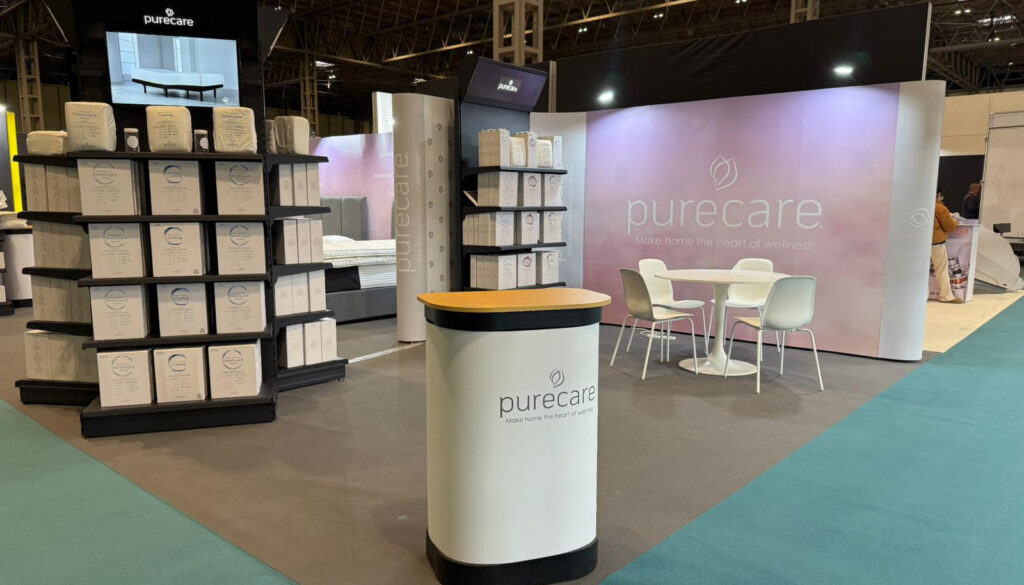Reflecting on last month’s Recycle Now’s Recycle Week, Angela Moran, ESG Director at Silentnight, looks at how businesses can improve manufacturing and recycling processes to extend the lifecycle of materials used in mattresses, ensuring that comfort and environmental impact are a priority.

Being the UK’s most trusted sleep brand means being synonymous with comfort. What we’re perhaps less well known for is our passion for recycling and quest to follow the life journey of mattresses beyond our factory doors.
The comfort of our customers will always be a priority. But, having discovered that post-consumer mattresses account for between 15-20% of carbon emissions, it’s important that the materials we use not only help people sleep well but can be recycled and reused.
For us, achieving net zero and transitioning to a circular economy go hand in hand and it is only through collaboration with the wider supply chain and through external partnerships that businesses can progress with circular thinking.
Rethinking the design of our mattresses
For our mattresses specifically, transitioning to a circular economy has required shifting our mindset to consider what happens to mattresses at the end-of-life stage. This has meant revisiting our entire manufacturing process with a fresh perspective – from design right through to working with our recycling partners. Through the conversations we’ve had with those we’ve been able to open our eyes to what materials are harder to recover and why the way we build a product can make a world of difference.
Historically, mattress assembly processes rely on staples and glue and various mixed materials are used in quilting and padding layers. These can make disassembly difficult and recycling almost impossible. Ultimately, this led us to place eco-design principles at the heart of our product development process for our entire catalogue.
Mattress disposal
And eco-design principles are desperately needed in mattress manufacturing. In the UK around seven million mattresses end up in waste streams every year with local authorities handle the majority. The problem lies in what happens with these mattresses post-disposal. According to the National Bed Foundation Mattress Disposal website, 34% of local authorities handle with recycling partners to deconstruct or shred 39% of mattresses for energy recovery. But more than a quarter of local authorities still send mattresses straight to the landfill. That can’t continue.
The good news is that if a mattress gets to a responsible recycler, 86% of materials can be reused in new products. In the last few years, more retailers and manufacturers have been partnering with responsible recycling partners and, to support others, the NBF launched a mattress disposal website earlier this year.
In addition to adapting the design of our mattresses to help with disassembly, we’ve also had to think about the various ‘what ifs’ in regard to the re-use and worth of the materials our recycling partners are left with.
The best way to improve the recyclable value of old mattresses is to ensure they get to recyclers in a dry condition. Local authority collections typically mean that mattresses end up getting wet while waiting for collection. When this happens, only the steel can be recovered. That’s why we now offer our customers a collection service which ensures products are collected in a clean, dry state, in turn increasing the value of the materials used.
Encouraging our customers to reduce, reuse and recycle
Most of our consumer purchases go through retailers, and by working closely with them, we can help improve our messaging with an aim to encourage people to adopt a ‘Reduce, Reuse, Recycle’ approach when mattress shopping.
We encourage all of our customers to think about durability and seek out mattresses built with comfort layers that can stand the test of time. We also advise customers to invest in a pocket-sprung mattress, which are known for their extra durability.

Customers can also extend the life of their mattresses by using a mattress protector, airing the bed daily and turning or rotating the mattress regularly.
We also encourage people to reuse their mattresses. If a mattress that is no longer needed is in good condition, we advise customers to get in touch with organisations such as the Re-use Network or think about donating it to charity.
Where a mattress can’t be donated, mattresses need to go to a responsible recycler. For customers, the best way to ensure this happens is via a retailer Trade-in or dedicated mattress collection service.
Mattress rejuvenation facilities are also being invested in. That means when a mattress can’t be donated straight away, it can be safely cleaned and sold on for a second life, just like we do with clothes on resale apps like Depop and Vinted.
Finally, people should also be mindful about manufacturers making bold claims around the use of sustainable materials and suggestions that, for example, natural materials are better than synthetic ones.
At Silentnight, we tend to think in ‘systems’ rather than ‘materials’ and always look for evidence that a recycling system is in place for each material. Natural materials may be compostable and biodegradable, but they aren’t if there’s no infrastructure in place to support this. Consumers could be misled into thinking their mattress will be composted at end of life, which often isn’t the case. The reality is that the product will end in landfill or incineration. Other materials such as polyester will go on to have many other lives.
Supporting new regulations
While manufacturers can adopt processes to improve the recyclability of their mattresses, it is also important that we support new regulations.
We do this by working to ESPR (Eco-design Sustainable Products Regulation) standards, in which Digital Product Passports are a key element.
We’d also encourage the new government to implement an Extended Producer Responsibility (EPR) scheme for mattresses. Silentnight and the NBF are in support of a mandatory, industry led EPR similar to that in other countries, and it’s part of the jigsaw of the transmission to the circularity we all need.
It is our hope that through ensuring all aspects of the supply chain bear in mind their environmental impact, from design to disposal, that we’ll not only be able to extend the lifecycle of our mattresses, and the materials used to create them, but also support our wider journey towards achieving net zero and transitioning to a circular economy.














